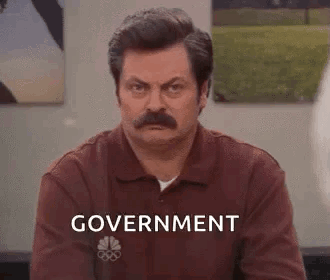No Comment
Public input is essential to smart land management—but our ability to make our voices heard is suddenly being thwarted at every turn.
In 2019, when my eldest daughter was in sixth grade in Santa Fe, New Mexico, the local school board held a meeting to discuss whether to shut down her beloved elementary school due to declining enrollment in the district. Around two hundred people showed up for the event, creating a raucous atmosphere. We've all seen clips of the type of meeting I'm describing, ones where spontaneous cheering erupts at regular intervals, and board members have difficulty maintaining order.
What made this meeting unique—for me, at least—was that my daughter and her best friend spoke, reading a speech they wrote themselves. They made some solid points, and even landed some strategic applause lines:
In the end, the board voted to keep the school open. It wasn't a direct result of my daughter's speech, but there's no question that the overwhelming opposition expressed by the dozens of speakers that afternoon played a role in the final decision. And that's how democracy is supposed to work. Living in America doesn't mean we all get to vote on every policy decision. But on most things, we do get to weigh in, and there are rules in place to ensure our comments are factored into the decision-making process.
Why am I leading this week's RE:PUBLIC newsletter by describing a small-town school board meeting from five years ago? Because I was reminded of it this week when the current administration made yet another announcement that essentially dismisses the same kind of public input. On Monday, President Trump declared he was moving forward with the Ambler Road Project, a proposed 211-mile industrial access road in Alaska that would connect the Dalton Highway to the Ambler Mining District and open up development of copper mining.
The Ambler Road Project has been controversial because of potential environmental, subsistence, and cultural impacts, and it was canceled in 2024. That decision came after a years-long deliberative process. The Bureau of Land Management issued two Environmental Impact Statements (EIS) for the project, and held dozens of public meetings to solicit input during two separate public comment periods.
During those periods, over 82% of the comments, drawn from Alaska Native tribes and corporations, environmental and conservation groups, and subsistence users, supported the “No Action Alternative” (bureaucratic jargon for "not building the road"). And eventually, not building the road was selected as the preferred decision in the final EIS, in part because of the kinds of environmental impacts on caribou herds and fisheries raised in the comments were judged as significant and not adequately addressable.
President Trump’s recent action revived the Ambler Road project, directing the Bureau of Land Management, the Army Corps of Engineers, and the National Park Service to “promptly issue authorizations … necessary for the establishment of the Ambler Road Project.” This includes reissuing permits that had been revoked or withheld under previous administrations. While Trump’s decision states that he “considered all relevant information as necessary and appropriate,” the order and fact sheets do not require a new EIS, nor do they explicitly require going through the full public comment processes. In effect, those earlier input stages that had opposed the road and underpinned the “No Action” choice are being superseded.
Put another way: where the previous administration used public participation as central to deciding not to build the road, Trump’s decision treats public comment and environmental review as impediments to be overridden in the name of strategic mineral access. Setting aside the troubling fact that Trump's decision benefits one of his largest campaign donors, the move reflects what has become a pattern of cynical circumvention of public input. And it's a pattern that should disturb every American—left, right, or center.
Understanding the mechanics of how the public comment process works, and how it must be addressed in rule making can quickly get confusing and devolve into explainers that include dozens of acronyms. Here's the Cliffs Notes version:
- The Administrative Procedure Act (APA), passed in 1946, compels agencies to seek and respond to public comment before adopting new rules.
- The National Environmental Policy Act (NEPA) of 1970 ensures that when the federal government undertakes major actions that could affect the environment, it must study those impacts and invite the public to weigh in.
- The Federal Land Policy and Management Act of 1976 (FLPMA)—the backbone of Bureau of Land Management operations—mandates participation from citizens, tribes, and local governments in the planning of resource management.
All of these laws are designed to ensure that land management isn't the work of a single agency, acting bureaucrat, or administration. Decision making has to be participatory, reasoned, and accountable.
Why is this important? People who live and work on or near federal lands often know things agency staff cannot: where water collects after a storm, how elk migrate through a canyon, or how a proposed lease might affect a town’s tourism economy. And even when comments come from lesser informed citizens, and are repetitive or passionate rather than technical, they still serve a democratic function: they show what people value, where conflict lies, and how strongly people care about the outcome.
In action, the public comment process can also look and sound like bureaucracy at its most tedious. Thousands of letters. Dense environmental analyses. Form submissions. Long waits between draft and final decisions.

But democracy is messy, and with respect to policies that effect our public lands, public comment is essential—even if it slows down decision making.
It would be one thing if this week's decision on the Ambler Road Project was the first time the Trump administration has overlooked a years-long public comment process. But going all the way back to his first administration, Trump has made a series of decisions that can only be interpreted as being uninterested in the views of common citizens.
- In 2020, Trump’s Forest Service finalized a rule exempting the entire Tongass National Forest from the Roadless Rule, thereby permitting logging and road construction on roughly nine million acres that had been protected from such development. This decision followed a short comment period that drew more than 400,000 comments, with 96 percent of them opposing the exemption.
- In April 2025, the administration issued an interim final rule that removed NEPA implementing regulations—effectively allowing federal agencies to bypass the public notice and comment period for any rule considered “clearly contrary to the public interest.”
- In September 2025, Trump moved to negate the Public Lands Rule, which governs BLM land management decisions and ensured, for the first time, that conservation is on equal footing with traditional uses like grazing, mining, and energy development. The PLR was drafted after a 75-day comment period during which BLM received roughly 216,000 comments. And after reviewing the comments, the BLM did not simply plow ahead ignoring criticism—from either side of the debate. In the final rule, the agency explicitly revised several provisions in response to important feedback from ranchers concerned about losing grazing rights.
- Just yesterday (October 8), Trump pushed the Senate to use the Congressional Review Act to disapprove BLM resource management plans (RMPs), which could invalidate completed planning decisions—ones that factored in thousands of public comments—and potentially resets the entire public planning processes for BLM lands.
These moves sound dry and procedural, but their implications are enormous. Without meaningful public input, land management decisions become more insular, more political, and more prone to error.
Supporters of these rollbacks argue that public comment slows progress and causes analysis paralysis. The White House frames the reforms as efforts to streamline bureaucracy and accelerate job creation. "Promoting economic growth and American innovation are top priorities of this Administration," Monday's announcement of the Ambler Road ruling states. "Unlawful, unnecessary, and onerous regulations impede these objectives." But the goal of public comment is accuracy, fairness, and foresight—not speed. A rushed decision can lead to environmental harms that can never be undone.
That's not to say the comment system can't be improved. Agencies could modernize their online portals, provide summaries in plain language (good luck parsing this current rule now open for comment!), and conduct more outreach to rural and tribal communities most affected by proposed rule changes.
But what is unfolding now under the current administration is regression, not reform. By weakening the public’s right to be heard, the government risks making decisions that are less informed and less sustainable. Expect years of litigation and a climate of uncertainty that could paralyze the very industries Trump wants to support.
The idea of public lands has always been tied to the idea of democracy. These are places that belong to everyone, held in trust by the government for the benefit of all of us. Managing them on America's behalf requires more than administrative efficiency. It requires public voice.
Update

Last week I wrote about the Trump administration's recent infatuation with bringing back coal, and why it makes little economic or strategic sense at a time when the rest of the world is rapidly transitioning to clean energy. As expected, even the mining industry is proving to be bearish on reviving coal. "Federal officials indefinitely postponed a Wyoming coal lease sale scheduled for Wednesday," WyoFile reported, "apparently in response to what many observers consider a lowball bid on another federal coal lease on Monday in Montana." The lone bid, from the Navajo Transitional Energy Company, offered less than a penny per ton—substantially less than previous bids for mining leases in the region.
The Good, the Bad, and the Ugly
Every Friday, our team shares critical stories about public lands from around the internet. This list could be exhaustive and exhausting, but our intent is to inform, not overwhelm. Instead, we choose three to five important stories you should be aware of—including at least one piece of good news.
The Good: Texas getting one of its biggest state parks ever—54K acres of wild landscape: "The land includes 7.5 miles of the West Nueces River, a 30-acre lake within the Nueces River and waterholes across the property, according to a proposal from the commission, which was presented in August. It also features steep canyons and rolling hills. The Texas Parks and Wildlife staff believes the property is suitable for a new state park as it would create additional recreation opportunities and habitat protection for native wildlife."
The Bad: New bill from Senator Lee would butcher the Wilderness Act under the guise of border security: "A bill dropped Thursday by Utah Sen. Mike Lee proposes to open all federal land within 100 miles of the country’s northern and southern borders, including wilderness areas, to roads, border agents, motorized boats, clear-cutting, and even structures. Lee and his cosigners say the bill would allow border agents to more effectively manage illegal immigration into the country. Sportsmen say the bill would completely overhaul the Wilderness Act and 'defile' public lands."
The Ugly: Shutdown Smokescreen? Public Lands Furloughs Could Become Layoffs: "President Donald Trump posted on Truth Social about meeting with Office of Management and Budget Director Russell Vought to 'determine which of the many Democrat Agencies, most of which are a political SCAM, he recommends be cut.' Those potential cuts would mean big changes across the public lands of the Rocky Mountain West."




